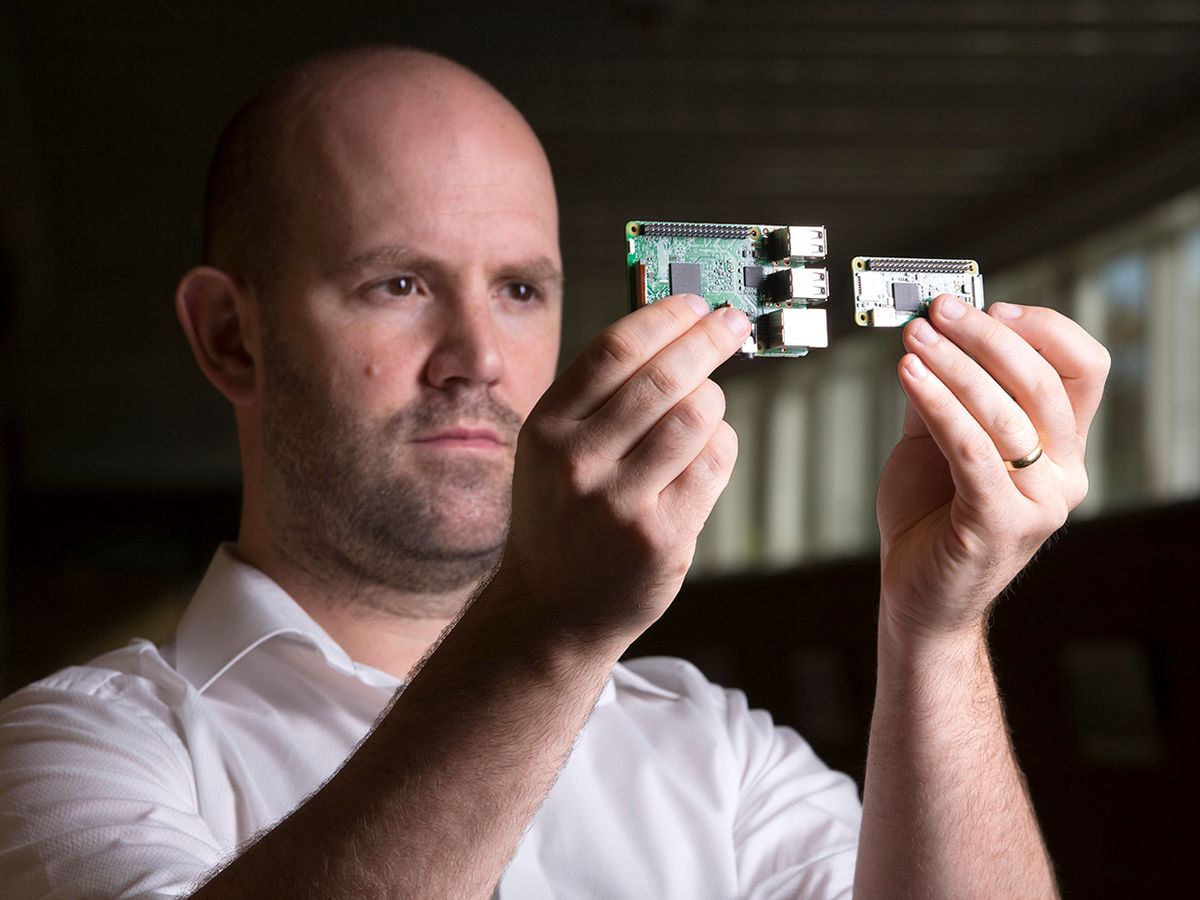Seven years ago, Eben Upton created the first Raspberry Pi. As Upton told IEEE Spectrum in our March 2015 cover story, the Pi was inspired in part by his childhood experiments with a BBC Micro home computer: He wanted modern kids to have a simple machine that allowed for similar experimentation. Since then, the Pi has exploded in popularity, and the fourth major revision of the Pi was released in June. Upton talked with Spectrum senior editor Stephen Cass about the Pi 4's design, its growing commercial use, and what might be next.
Stephen Cass: How has the Pi's user base evolved?
Eben Upton: Our first year, our volume was almost entirely bought by hobbyists. But you have a lot of hobbyists who are also professional design engineers, and when their boss asked them to do something, often they used a Pi. So now you have people who are building industrial products around the Pi to resell. And then you have what we call, for want of a better word, DIY industrial, which is “I own a factory and I need control computers." And where I might have historically gone and bought an embedded PC, I'll buy a Pi. Last year we sold 6 million units and [we think as much as] half of those went to some kind of commercial use.
S.C.: How did that evolution shape the design of the Pi 4?
E.U.: We're quite lucky in that all our markets have similar requirements. The things we do to make it a better toy make it a better industrial computer. And the things you do to make it a better industrial computer make it a better hobbyist platform. For example, we had a number of people building thin-client solutions, and the feedback was that most of the people doing that wanted the option of being able to deploy two monitors. So we added that feature. Another obvious example would be the serial interfaces. Prior generations are a little underprovisioned for things like UARTs, serial ports, SPIs, I2C interfaces, but because we were redesigning the silicon from scratch, putting UARTs in was pretty straightforward.
S.C.: What other changes did you make in redesigning the Pi's system processor?
E.U.: The last three Pis have all been made using the same [40-nanometer] process, so modifications have been limited, mostly putting in a larger ARM [CPU]. If you look at the floor plan of the chip, each new ARM gets stuck on the left-hand side. The chip stretches horizontally and becomes bigger and bigger. But nothing on the right-hand side changes, and the right-hand side is where the memory controller is, where the UARTs are.... But putting in a larger ARM core means your power goes up and eventually you run out of your thermal budget.... We realized we needed to go to a 28-nm process node. And once you're going to a new process node, you might as well fix all of the wrinkles. And that's why you see two displays, many UARTs, PCI Express, Gigabit Ethernet.
S.C.: How long before the slowdown in Moore's Law affects the Pi?
E.U.: I think it's relevant to think in terms of how much is left. How much for a given thermal footprint? We've come a factor of 40 [in the Pi's computing power from the first Pi to the Pi 4]. There's not another factor of 40 left, which means you've come through more than half this process.... On some level that's intimidating. But I'm a software engineer. It's actually really nice to feel that we're going into an era where software engineering makes a contribution again! My Ph.D. is in optimizing compilers, and while I was doing it I felt really depressed, because [improving software by a factor of two was small compared to the exponential hardware improvements of Moore's Law]. But the thing about that factor of two is that it's there at the end. There will come a time when they'll be very grateful for it!
This article appears in the September 2019 print issue as “How the Raspberry Pi Infiltrated Industry."
